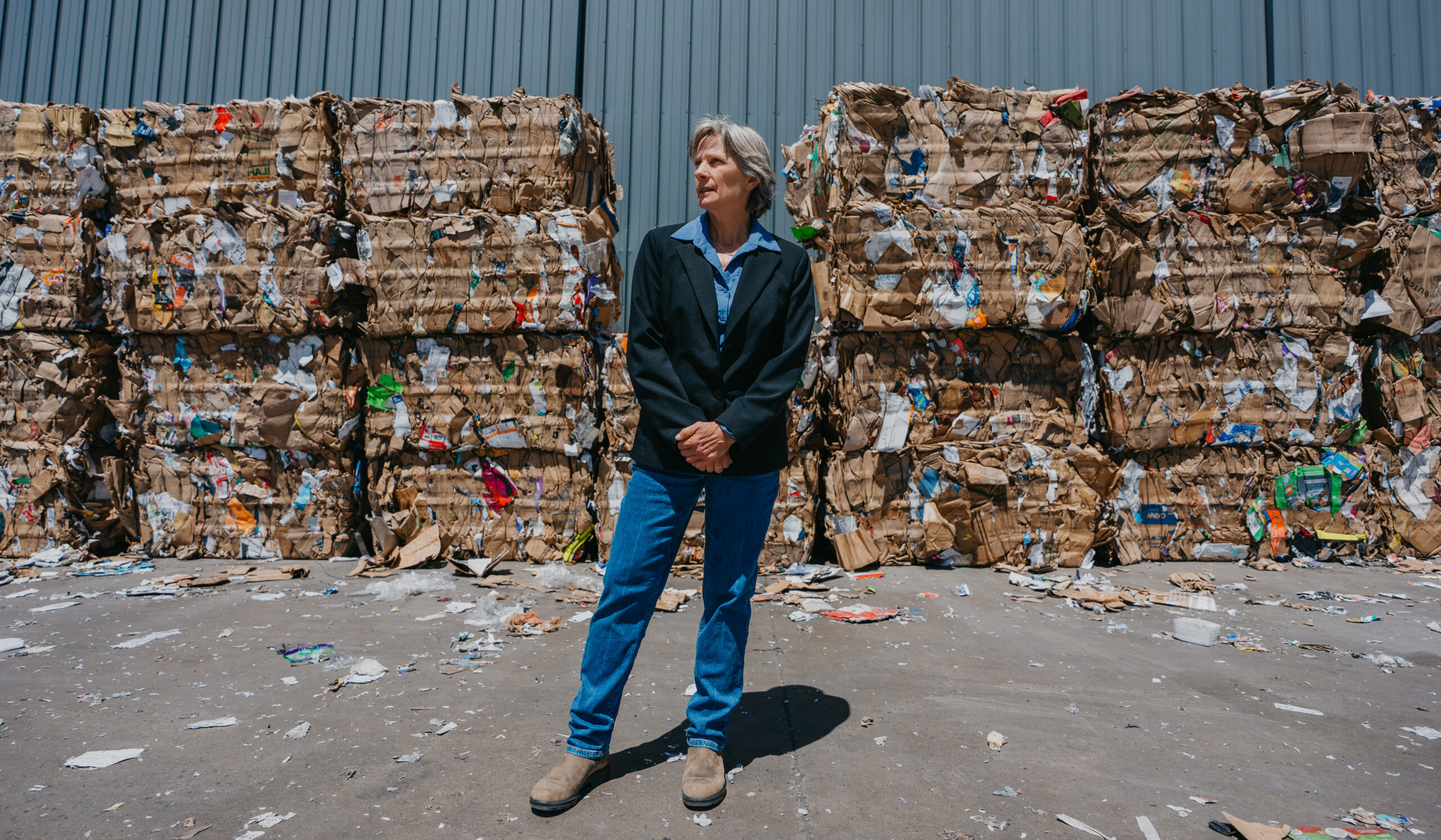Paolo Pasquariello is a professor of finance at the U-M Ross School of Business. His research interests are information economics, international finance, and market microstructure. We spoke to Pasquariello about the current high rate of inflation.
Consumers have seen a significant price increase on products such as gas and groceries over the last year. What is causing this seemingly abrupt increase?
This recent bout of inflation is due to causes old and new. As for the “old,” the past teaches us that any negative shock affecting a stable, reliable supply of energy will lead to a rapid increase in energy prices. Think of the turmoil in the Middle East in the 1970s leading to high gas prices and lines and the pump. This year, the Russian invasion of Ukraine has both disrupted the previously steady supply of natural gas from east to west and yielded economic and financial sanctions on Russia, which severely impeded its ability to distribute its oil onto the global markets. Energy markets are truly global, such that a shock anywhere in the world will quickly reverberate throughout, since anyone extracting oil anywhere will try to sell it at the highest price.
Unsurprising is also the inflationary effect of many of the measures governments undertook to support their economies in the midst of the coronavirus pandemic. For instance, much government help in 2020 and 2021 actually increased the amount of disposable income for many consumers. It is a paradox (or perhaps even an indictment) of modern American society that many workers actually did better during the pandemic thanks to the government’s financial support. In addition, many saved more as the opportunities to spend money dwindled. After all, for months we were unable to spend money at our preferred restaurants and clubs. All these savings were being held by the lockdown dams. When that dam broke, all that liquidity flooded the economy, pushing prices up.
And here comes the “new”: The pandemic heavily disrupted global supply chains everywhere. Many companies that previously (and virtuously, according to business gurus) relied on the “just in time” business model of keeping inventory low and goods flowing found themselves short of products as the demand boomed. Unavoidably, prices of these products went up. Since the economy is interconnected, price increases in some sectors quickly reverberate in others. If you work at a restaurant and are paying higher prices at clothing and grocery stores, you will ask for a raise to keep up; the restaurant owner will have to increase menu prices, both because of more expensive labor and because of more expensive produce; restaurant patrons will find themselves priced out of some of their preferred dishes, and will start demanding more to simply keep up with increased cost of living, in a vicious spiral that keeps pushing prices up.
Is this inflation rate “normal”? Is it something we can expect to continue at the same rate?
It depends on the meaning of the word “normal.” The current inflation rate is normal in the sense that, in light of the severe disruptions I highlighted above, such a price boost had to be expected. What remains uncertain is how long such inflation is going to last. Should this inflation persist and linger, most economists would both worry and label this phenomenon as a departure from normality. After all, it is likely that many of those disruptions will eventually subside. It turns out that most consumers and financial market participants seem to expect this bout of inflation to be temporary. How do we know this? We ask consumers to give us their views of the future (including here at the University of Michigan), and many do not expect high inflation in the medium term. As for market participants, we look at their financial bets and those reflect expectations of lower inflation in the medium term as well.
There are two reasons for expecting inflation to decrease, as well as to be optimistic about future inflation. First, the Federal Reserve has taken decisive action aimed at cooling off the economy. If too many people are trying to buy new cars while car dealers run out of inventory, the Fed increases interest rates to convince some of them to postpone leasing or borrowing to purchase a new one. If too many people are trying to buy a new home or to move to a bigger one, higher mortgage rates may convince some to stay put. Of course, all of this and more means that the economy will be slowing down or even entering a recession. At the currently very low unemployment rates, however, this is an unavoidable price to pay to re-enter on a more “normal” inflation path.
Second, the logistical impediments due to the pandemic are slowly but surely being resolved. Companies are finding new ways to manage their inventory, from “just in time” to “just in case” for instance, that will lower the risk of future scarcity of products; we are unlikely to have to desperately look for toilet paper any time in the future. Companies are also revisiting their prior push to decentralize their production facilities around the globe. The new word for readers to keep in mind is “political risk,” which for companies means the risk that events that are both difficult to predict and beyond their control may disrupt their supply chain; think of the never-ending lockdowns in China, for example. Thus, many companies will likely diversify their geographical footprint to minimize the impact of any form of political risk in any particular country.
Unfortunately, not all companies and industries will be able to address these issues with the same degree of success. Some industries are geographically constrained and heavily labor-dependent. Think of tourism and entertainment, for instance: faced with scarcity of labor, a Florida resort, a Wyoming ski hamlet, or a Broadway show cannot easily relocate elsewhere. For those industries, inflation both increases their labor costs and decreases patrons’ willingness to visit and spend. Other industries will find it less difficult to cope with these new trends, for example by pushing for greater automation on their production lines.
Paradoxically, all of this may actually fuel inflation in the short term, as companies will choose to produce not in the cheapest countries alone but also in more stable (and expensive) ones. In the medium to long term, however, this will bring more stability to their supply chain and more stable prices on the shelf for consumers.
How does inflation affect the value of salaries, retirement benefits, and savings?
Of course, relatively high inflation is perceived by most of us as a disruption to our daily life. As long as our salaries do not adjust as quickly as prices — which in the short term is a good thing, in light of the vicious inflation spiral I described earlier — we feel poorer, and we are poorer, since we cannot easily afford some of the things we previously did. In fancy terms, our real income and standards of living have declined.
However, there is a silver lining, one that is rarely discussed in the media. Inflation redistributes wealth from creditors to debtors. Some Americans are creditors, for instance when they deposit money at the bank, save a portion of our money for retirement, buy a corporate bond, or invest in a Treasury bill. The real value of all of their savings and investments is declining. In that sense, the “real” value of their net worth is reduced and they feel poorer.
However, it is worth remembering that most Americans are not net savers, and many Americans have meager precautionary savings or investment accounts. Most Americans are instead debtors, in that they owe money to banks on business and personal loans and especially mortgages. Because of inflation, the “real” cost of these loans is actually going down. If in the past your $1,000 mortgage payment meant 10 fewer meals out for you and your spouse, now that same mortgage payment requires you to sacrifice only seven visits at your preferred restaurant, since that restaurant has become more expensive.
It is no surprise that the loudest voices against inflation come from the “creditor class” both on Wall Street and Main Street.
Can consumers expect prices to decrease?
Yes, they should, for all the reasons I discussed above. However, I also predict that many of them are not going to like it. Why? Because the decrease in prices will be accompanied by a recession, by lower salary growth, by reduced economic opportunities, by fewer jobs, by less mobility.
Then there is, of course, the question mark of the conflict in Ukraine. Will Ukraine succeed at pushing Russia toward its borders before the winter? Will then Russia come to the negotiating table? Will it instead escalate the conflict with catastrophic consequences for the global economy?
A final word of warning: no serious economist can claim to have a crystal ball to predict how these events are going to play out. At best, our crystal balls are murky, as I am used to telling my International Finance students. We make predictions, but we should be humble about the strength of our convictions.





